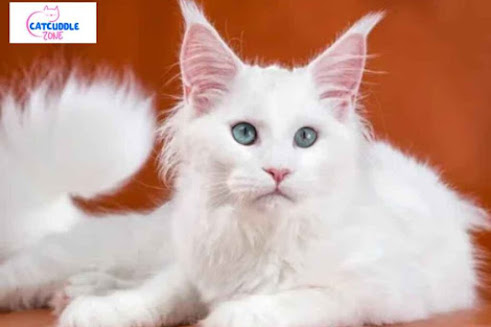Cat Twitching While Sleeping: What You Should Know
Have you ever noticed your cat twitching in its sleep and wondered if it’s normal or something to worry about? You’re not alone. Cat owners often find themselves watching their feline friends twitch, move their paws, or even make little sounds while snoozing. It can be adorable—or mildly alarming if you’re not sure what’s happening.
In this article, we’ll explain why cats twitch in their sleep, when it’s normal, and when it might signal something more serious. By the end, you’ll be better equipped to understand your cat’s dreamy behaviors and know what to look out for.
For a deeper dive into this topic, visit: https://catcuddlezone.com/cat-twitching-while-sleeping/
Understanding Cat Sleep Cycles
Like humans, cats go through multiple stages of sleep. These include:
1. Light Sleep (NREM)
During this stage, your cat is dozing lightly. You might notice their ears still twitching or their tail giving a gentle flick. They're relaxed, but still aware of their surroundings.
2. Deep Sleep (REM)
REM (Rapid Eye Movement) sleep is when dreams happen. This is the stage where twitching is most likely to occur. A cat in REM sleep is deeply relaxed and may exhibit movements like:
-
Twitching whiskers
-
Flickering paws
-
Tail jerks
-
Ear flutters
-
Soft vocalizations
These movements usually last only a few seconds at a time and are a sign that your cat is experiencing dreams—possibly chasing birds or playing with a toy mouse in their dream world.
Why Do Cats Twitch in Their Sleep?
Here are some common reasons your cat might twitch during sleep:
1. Dreaming
The most common and harmless reason. During REM sleep, brain activity increases, and your cat’s brain may replay their daily activities. This can result in random twitches or mimicking physical actions.
2. Muscle Relaxation
As your cat enters deep sleep, the muscles may involuntarily twitch as they relax. This is a normal biological response and usually nothing to be concerned about.
3. Temperature Regulation
Occasionally, twitching can be your cat’s way of adjusting their body position in response to temperature changes or discomfort during sleep.
4. Kittens Learning Movement
Kittens twitch more frequently than adult cats. Their nervous systems are still developing, and the twitching may be related to their brains practicing motor skills in sleep.
When Is Twitching a Cause for Concern?
Although twitching during sleep is usually normal, there are a few signs that may indicate something more serious, such as seizures or other medical issues. Here’s what to watch for:
1. Seizures vs. Sleep Twitching
It can be hard to tell the difference, but seizures are more intense and last longer than sleep twitches. Signs of a seizure include:
-
Stiffened limbs
-
Foaming at the mouth
-
Loss of bladder or bowel control
-
Prolonged disorientation after waking
If you ever suspect your cat is having a seizure, consult your vet immediately.
2. Pain or Discomfort
Twitching paired with signs of pain like vocalizing loudly, waking up suddenly, or biting at certain areas could mean your cat is experiencing discomfort or a medical issue.
3. Frequent and Violent Movements
If twitching becomes excessive, violent, or more frequent than usual, it’s a good idea to get your cat checked out. Sudden behavioral changes should never be ignored.
Should You Wake a Twitching Cat?
In general, no—you shouldn’t wake a twitching cat. Sleep is crucial for cats, especially since they can sleep up to 16 hours a day. Interrupting REM sleep can be disorienting and stressful.
However, if the twitching looks painful, lasts unusually long, or includes signs like loud yowling or convulsions, it’s okay to gently wake your cat and check on them. Just do it calmly—no sudden movements or loud noises.
How to Support Healthy Cat Sleep
Here are a few simple tips to ensure your cat gets high-quality, restful sleep:
-
Provide a quiet, cozy sleeping area away from loud noises or heavy foot traffic.
-
Stick to a routine – cats love consistency.
-
Feed your cat before bed – a full belly helps induce sleep.
-
Give daily playtime to burn energy and reduce nighttime restlessness.
-
Keep your cat healthy – regular vet visits help rule out any sleep-disrupting health issues.
Final Thoughts
A twitching cat during sleep is usually no cause for alarm. In most cases, it’s just your feline friend dreaming of chasing butterflies or pouncing on imaginary prey. However, as a responsible cat owner, it’s important to stay alert to any signs that might indicate something more serious.
If you notice persistent or abnormal movements, don’t hesitate to reach out to your veterinarian. Trust your instincts—after all, you know your cat better than anyone else.
Want to learn more about your cat’s quirky behaviors and how to keep them happy and healthy?
👉 Read more here: https://catcuddlezone.com/cat-twitching-while-sleeping/
Cat Cuddle Zone is your trusted space for cat care tips, feline behavior guides, and everything in between. Whether you’re a seasoned cat parent or a new adopter, we’re here to help you better understand your furry companion—one purr at a time.




Comments
Post a Comment